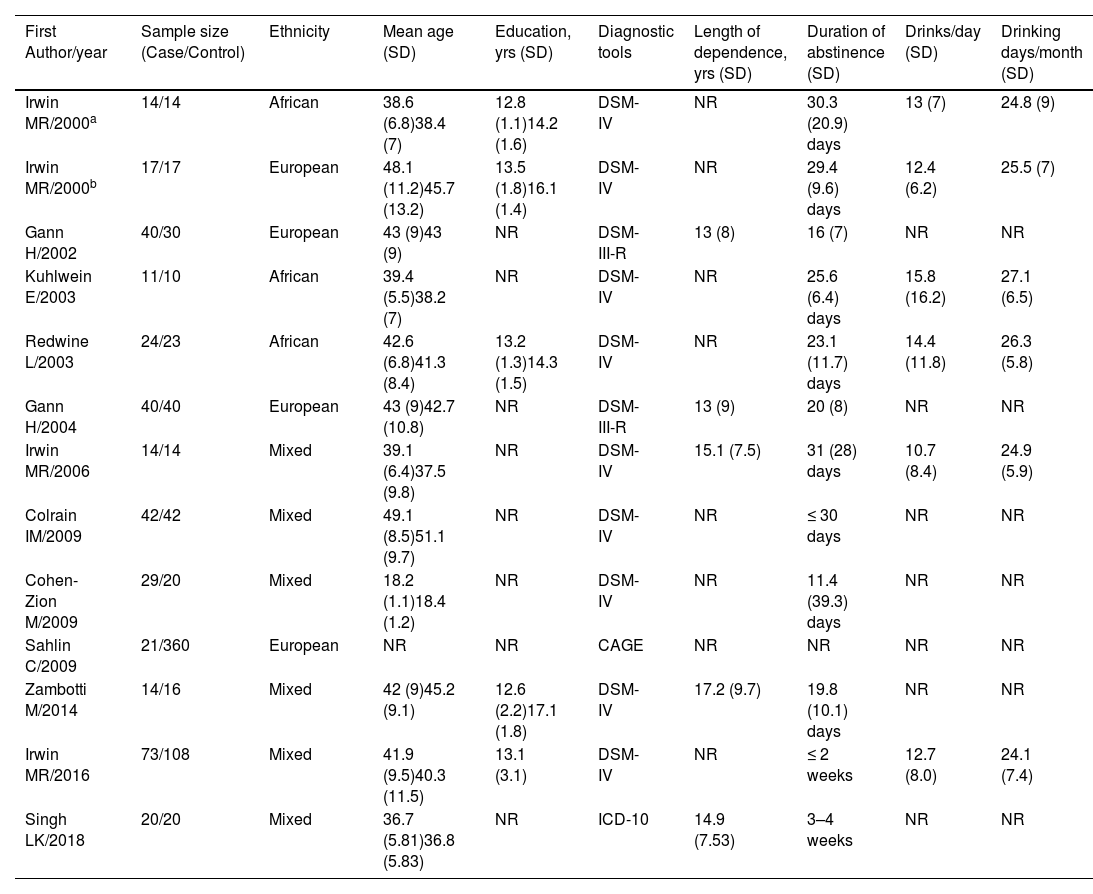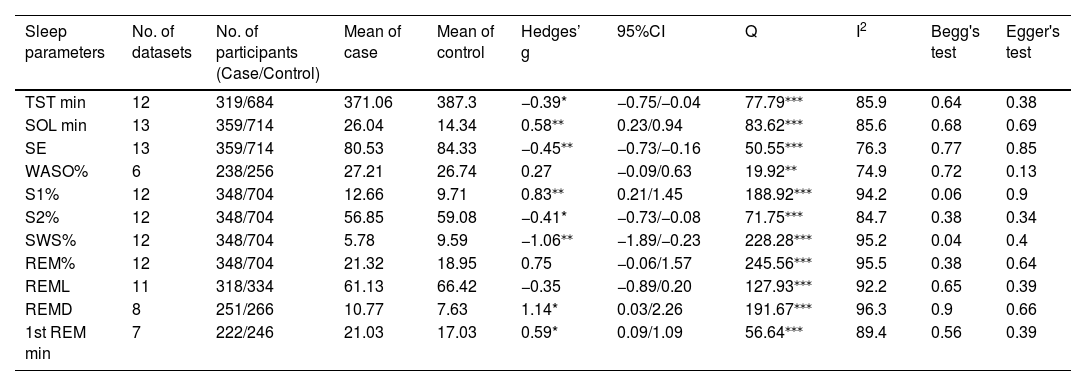Alcohol use disorder (AUD) is often linked to sleep problems, but previous studies on sleep abnormalities in AUD have produced inconsistent results. This study aims to provide a comprehensive analysis of objectively measured sleep abnormalities in AUD and determine the impact of related and demographic factors on sleep disturbance.
MethodsWe conducted a comprehensive search of several databases from 1968 to 2023 to identify relevant studies. A total of 12 studies, consisting of 13 datasets, were included in the analysis. We extracted information on sleep microarchitecture, as well as demographic and clinical features, from each study. The GRADE approach was used to assess the reliability and strength of the evidence.
ResultsPatients with AUD exhibited several sleep abnormalities, including longer sleep onset latency, lower sleep efficiency, increased stage 1 sleep, decreased stage 2 sleep, reduced slow wave sleep, and elevated rapid eye movement (REM) sleep density and first REM minute. The sleep patterns in individuals with AUD were also influenced by factors such as ethnicity, age, gender, and abstinence period.
ConclusionsThis study is the largest quantitative assessment of impaired sleep as a diagnostic marker in patients with AUD. Understanding the sleep patterns of individuals with AUD can assist clinicians in developing effective treatment plans for managing sleep-related symptoms associated with AUD.










